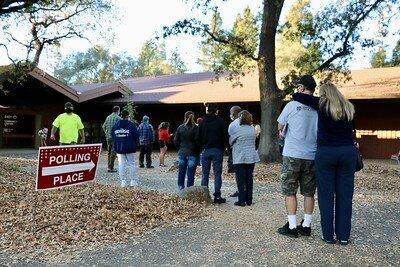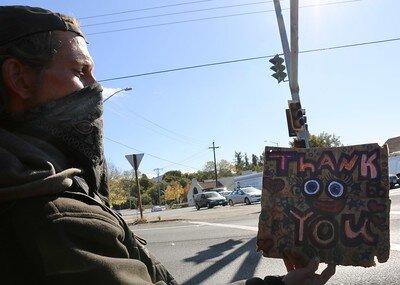Election results poured in Nov. 3 after 8p.m., but will continue to be tabulated as late as Dec 1. Ballots can be delivered to the county Registrar of Voters as late as Nov. 20; as long as they are postmarked by election day. With the election so fiercely focused on the race between the presidential candidates, the choices voted on locally can occasionally be overlooked. The most significant changes that affect citizens on a daily basis, tend to be voted on as measures at the local level.
Ballot measures that affect the whole of Sonoma County overwhelmingly passed with a two-thirds majority for the 2020 election cycle. There were also many city-specific measures that passed, including Measure Q, a quarter cent sales tax extension for the city of Santa Rosa. Rohnert Park also began the first voting cycle of its district-specific city council elections. Rohnert Park welcomed 2 new city council members Walter ‘Willy’ Linares and Jackie Elward. Voters participated in this election with a near record breaking number of ballots cast. A little over 75% of registered voters in Sonoma County cast a ballot.
Here’s what passed and didn’t pass on the county wide level:
Measure P: County of Sonoma Evelyn Cheatham Effective IOLERO passed with 65.56% of the vote.
Measure P creates a Civilian Police Review Board that will investigate alleged police misconduct, make recommendations for law enforcement, review testimony, subpoena records and evidence during investigations, and authorize the publication of body camera footage on the IOLERO (Independent Office of Law Enforcement Review and Outreach) website. This newly created division will be appropriated 1% of the total budget for the sheriff-coroner. Sheriff Mark Essick and the Sonoma County Deputy Sheriffs’ Association opposed this measure, but many groups such as the ACLU of Northern California and National Association for Civilian Oversight of Law Enforcement vocally supported the measure introduced by the Board of Supervisors. In an opinion piece by the Sonoma County Gazette, former President of the Peace and Justice Center of Sonoma County Susan Lamont said, “The goal of Measure P is an office able to help guide the Sheriff’s Office to policies that have been studied across the country and found to make both the public and law enforcement officers safer. These are called ‘best practices’…that’s what IOLERO is–fresh eyes.”
The call for civilian oversight largely began after the murder of George Floyd in June of 2020. Across the nation, there were similar measures proposed to vote on. In Ohio, for example, there were two local measures that increased civilian oversight of police. “Issue 2” in Columbus, Ohio was one of them and it, similarly to Sonoma County, created “the Civilian Police Review Board with authority to launch and carry out investigations of alleged police misconduct, subpoena testimony and evidence during the investigations, make recommendations to the Division of Police, and appoint and manage the new position of Inspector General for the Division of Police.”
Measure O: County of Sonoma Mental Health, Addiction & Homeless Services Transaction & Use Tax passed with 68.3% percent of the vote.
Measure O narrowly managed to get the two-thirds majority needed to pass. This measure will provide $25 million annually to homelessness and mental health services through a quarter cent tax increase. According to an article by The Press Democrat, the tax increase proceeds to be split into five categories: emergency psychiatric services, mental health services for children and seniors, behavioral health services for homeless residents, and supportive housing. In a county with over 2,500 documented homeless individuals, this tax increase could be vital in securing funding to fight the problem. Mental health advocate and Sonoma County Supervisor Shirlee Zane said that while the county could have used these funds 10 years ago, “…we are here right now, and the fact that the public agrees with us, that this is the right time, I can’t say enough thanks.”
Measure DD: Sonoma County Transportation Authority Sales Tax passed with 71.33% percent of the vote.
Measure DD, also referred to as the Go Sonoma Act, passed with flying colors. It extends an already in place quarter cent tax for another 20 years. The tax was due to expire in 2025 without this extension. The tax would create an estimated $520 million in total, or about $26 million annually, to go towards transportation related expenses, such as road and pothole repair, traffic reduction, safer biking and walking paths, local bus services, reduction of greenhouse gas emissions, improvements to evacuation routes, and enhanced services for seniors and student–according to the language submitted to the official ballot. A portion of that money will be divided up amongst each city to make local transportation system improvements. Opponents to the bill believed there wasn’t enough oversight to where the money was going or disagreed with an increase in taxes, in general. Measure DD and the funds it generates will be overseen by the Sonoma County Transportation Authority, which is made up of three county supervisors and a member for each of the nine incorporated cities. There is also a 25 member citizens advisory committee, appointed by the supervisors and charged with general oversight and public disclosures.





![[Both photos courtesy of sonoma.edu]
Ming-Ting Mike Lee stepped in as the new SSU president following Sakakis resignation in July 2022](https://sonomastatestar.com/wp-content/uploads/2024/04/CC4520AB-22A7-41B2-9F6F-2A2D5F76A28C-1200x1200.jpeg)



























